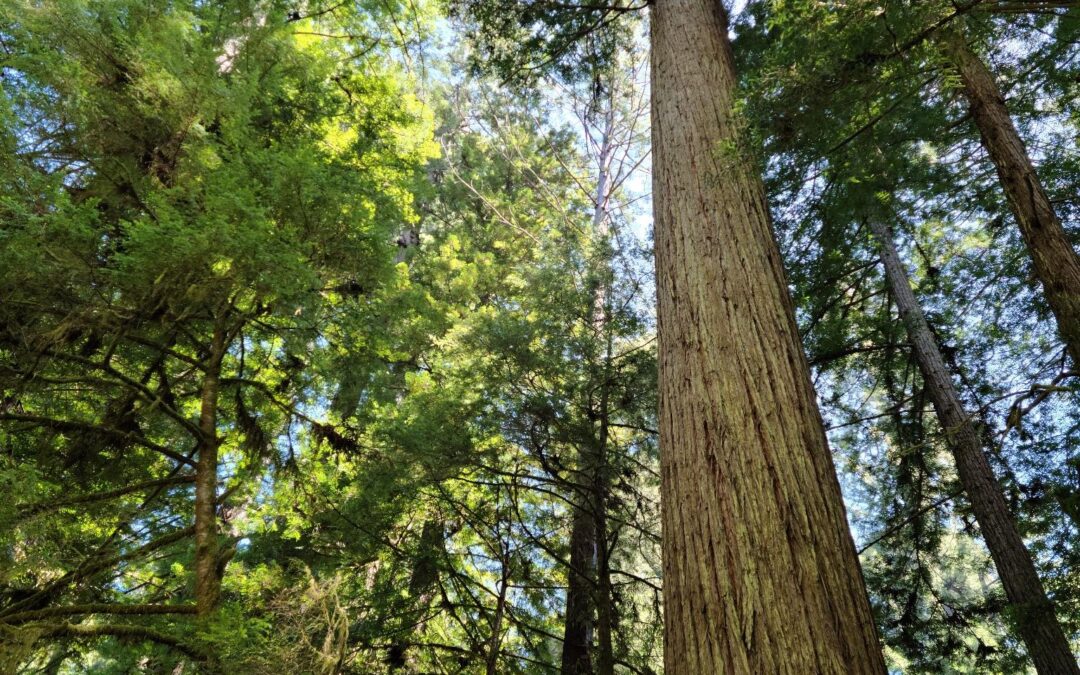The Redwood Way: Lessons Learned Beyond Rehousing Museum Objects
Written By: Katie Simpson
Preparing to travel across the country to participate in an internship felt like the antiquated inspirational, yet anticipatory plot of a young professional in a coming-of-age movie. Though there was no turning back after my departure, I experienced mixed emotions in wondering if I bit off more than I could chew. As soon as I turned onto Highway 101, all of those worries began to slowly fade away from the presence of roaring waves and majestic Redwoods that towered overhead.
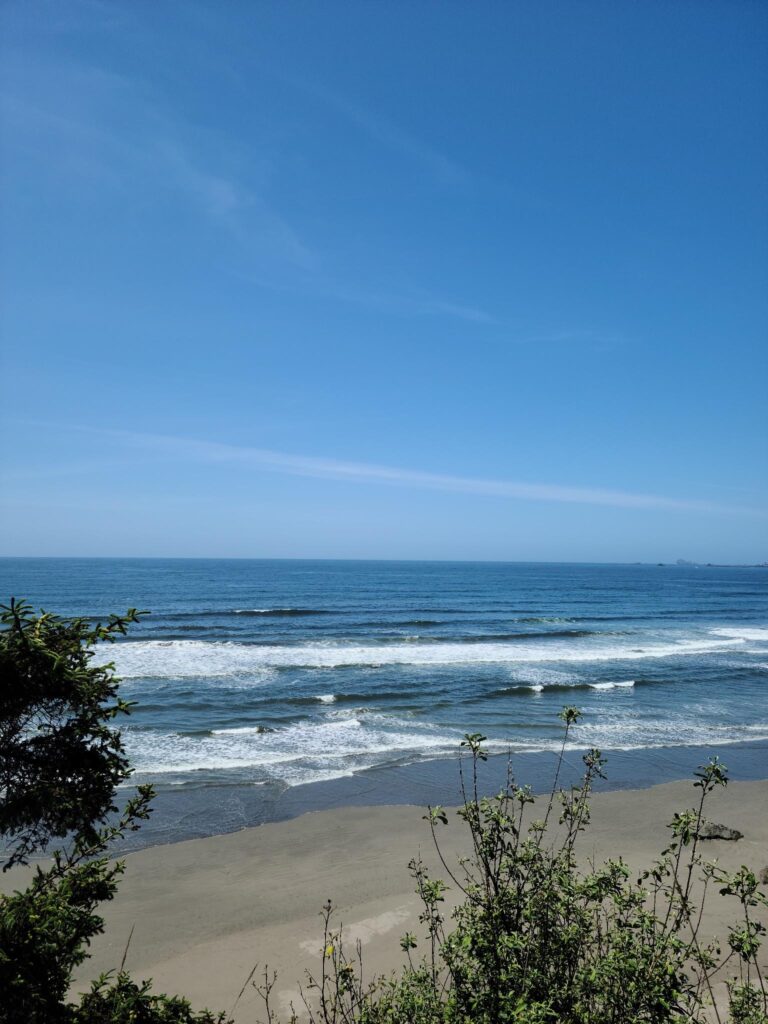
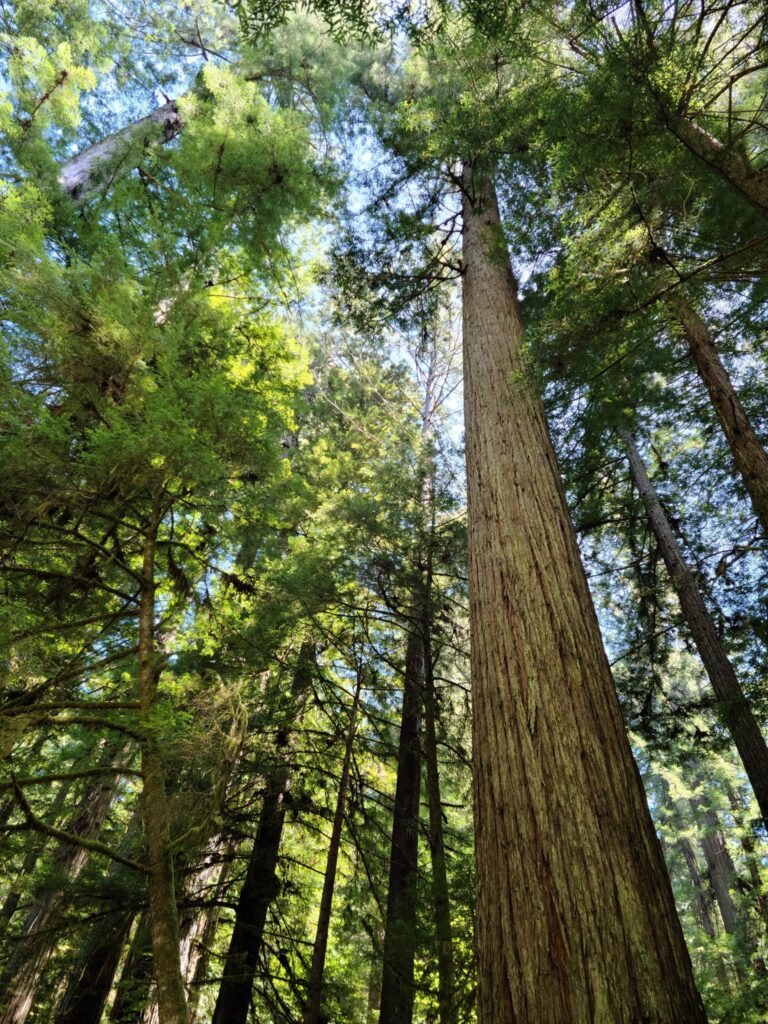
In the first week of my internship, I was amazed by the complex, drawn-out history of what led to Redwood’s establishment. Before this initial exposure to rich controversy, I had understood that this park unit is among the few that instituted tribal partnerships relatively early in its history. I knew then that my goal was not just to learn more about the park’s evolving relationship with its affiliated tribes, but how Redwood’s unique history of partnership led to how the park continues to operate today.
Each week I have been continually enamored with how serving in the museum services role for a park unit like Redwood is rather expansive, and really, a laudable model of how a career in cultural resource management can mend bridges between parks and their community. During my time at a California park, I’ve become familiar with an old humurous saying that “there’s a right way, a wrong way, and the Yosemite way”. While no park is perfect, I’ve come to realize that the ‘Redwood way’ is a shared feeling, outlook, and attitude, that is bigger than the park itself. Through quiet observation, it showed me that to truly accomplish our park’s mission, collaborative teamwork is essential to the dissemination of our long-term goals, and understanding differing perspectives on the goals’ significance.
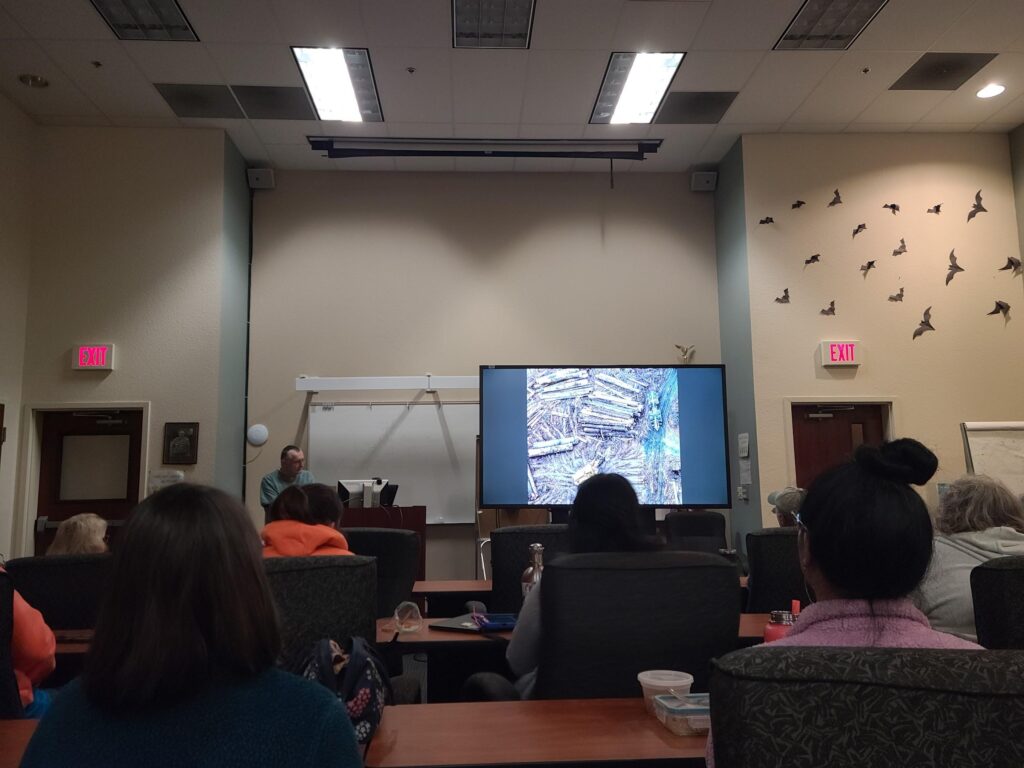
Dave Van de Mark presents his photographs to show the rehabilitation progress that has taken place since his initial photography of the Redwood Creek area before the National Park’s establishment in the 1960s.
These lessons are not only communicated in the General Management Plan but resonate in the day-to-day activities we do. For me, it was evaluating the scope of Redwood’s museum collection and drawing conclusions on how we can better consult and collaborate with the Indigenous communities that are tied to these living, cultural objects. As you would expect in museum services, a typical day for me consists of rehousing collection items. However, there are some times when special projects are sprinkled in the mix, like conducting a random sample inventory or providing editorials/comments on an Annual Funding Agreement or General Agreement renewal.
The most exciting aspect of my internship has been learning more, and interacting with the ‘avenues’ that create a path for government-to-government activities between tribes and the National Park Service. Through webinars, listening sessions, and professional development, I’ve come to learn that Annual Funding Agreements, established by the passing of the Indian Self Determination and Education Assistance Act (ISDEA) in 1975, are the least restrictive means [as opposed to permitting] for acknowledging or supporting tribes in pursuing activities that bolster their inherent sovereignty as tribal nations and cultural communities.
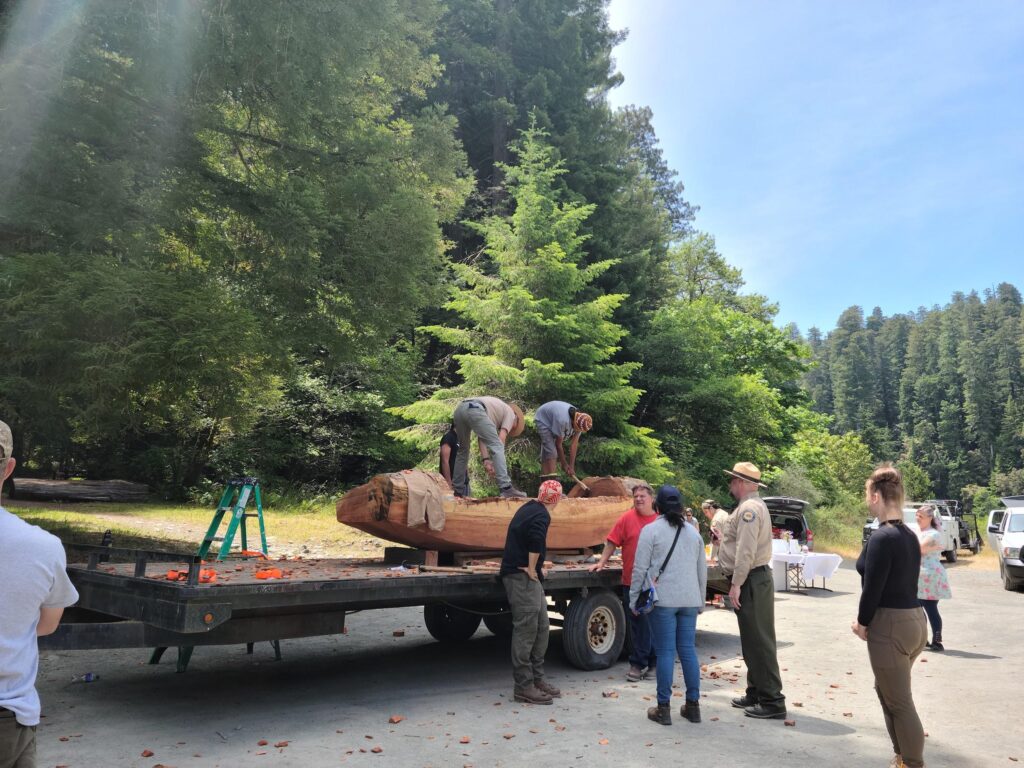
Tolowa Dee Ne’i constructing a traditional canoe [from a fallen Redwood that was donated to the tribe under an agreement with the Parks] at Tvmchaame’ on Tolowa Culture Day, a California State Parks Week event.
Annual Funding Agreements, or “AFA’s,” are a crucial aspect of the acknowledgment and exercise of tribal sovereignty because it creates a mechanism for tribes to engage with their traditional homelands in ways that were not possible prior to the passing of the ISDEA in 1975. Having the opportunity to participate in the editorial process of an active AFA and general agreement has not only been a learning experience within itself but inspired me to learn more about the mechanisms that take place to make these agreements successful.
Though some tasks are routine, I was eager to meet the challenge of applying what I learned in grad school to the agreement editorial process, though it was sometimes heavily nuanced and confusing. At the least, what I’ve come to learn about myself in that process was that you will not always know something in the beginning, especially when being introduced to the NPS side of doing things, which is not a process schooling will prepare you for. While there is still much for me to take in, I have come to know who, what, and where my resources are that will serve as a guide in helping me confidently navigate these unique obligations on the road ahead as an aspiring tribal liaison.
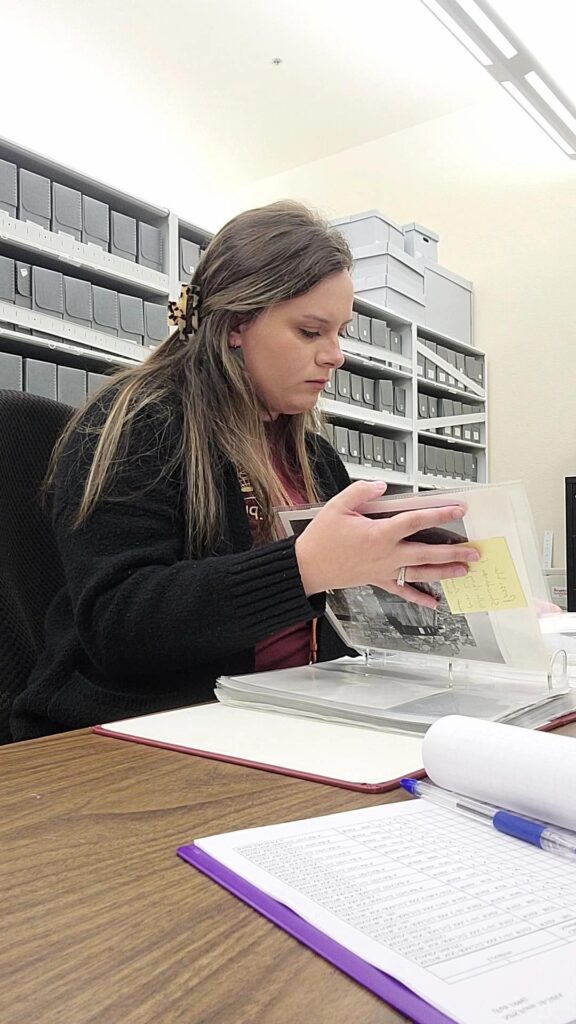
Reviewing photos from the Redwood National Park dedication ceremony for the National Archives and Records Administration (NARA) random sample inventory project.
